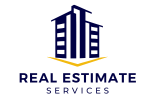During this time of global pandemic, contractors and their sureties are facing familiar challenges, such as material shortages and labor inefficiency, but at levels unprecedented in scope and duration, as well as unique challenges in the form of stay-at-home orders and government shutdowns of construction work deemed “non-essential” business. This article addresses some of the issues that the surety industry will need to consider in order to navigate the inevitable contractor failures and increased bond claims arising from the impacts of COVD-19 on the construction industry.
Some of the areas that are most likely to be affected by Covid-19 include:
- Project remobilizations
- Project cancellations
- Mothballed projects
- Development of separate cost codes
- Price escalations
- Contract suspensions and terminations
- New regulations and licencing requirements
Including the new dynamics in the construction estimating process is going to be one of the biggest challenges. Like all pandemic-related concerns, no one knows how things will end up or the kind of ‘new normal’ within which the industry will have to operate in the near future.
Trades
Sites were already struggling with obtaining skilled labour for certain trades, and it’s only going to get worse before it gets better. That assumes the sites don’t close, as the main priority has to be safety of workers and their families. Someone has to pay for this, as trades, owners, general contractors, and suppliers all will be hurting. Costs are going to increase on projects, likely more than the sudden drop-in interest rates will help. Where construction financing is in place, put that savings straight into contingency, because it’s likely largely gone.
Financing
As we run through the next billing cycle, who isn’t going to try and get as much cash as possible? The risk is if the sites stop and the project is over certified; is there enough cost available to complete? If the cash is gone by the time the remobilization happens in the future; is there an increased risk of defaults? Ultimately costs go up in the short term.
Revenue
Can I register the condo? Can I occupy the units? If the answer to either of those is ‘no’, then costs likely go up. If the industry stops for a short period, then costs carry on and go up. Margins; however, tend to do the opposite. Who had the foresight to put a contingency for global pandemics?
EXPECTATIONS
Our expectation is that the next few months will be turbulent, fueled by uncertainty at all levels of our industry. We therefore expect inconsistency related to cost, with some projects experiencing cost increases while others remain somewhat steady. We expect this pattern to continue as long as many construction sites and non-essential businesses are closed.
We expect stabilization relatively soon after construction broadly resumes. We expect costs to increase related to COVID-19 protocols as further described below but anticipate some or all those costs to be offset by de-escalation related to bidder aggression. We believe it unlikely that costs will rise as much as recent years where we saw as much as 7-8% escalation in some areas, comparing future costs to pre-COVID. We therefore expect, on average, to see zero to moderate per annum increases in the near-term, depending of depth and duration of a recession.
Currently, there are varying guidelines, orders, and self-imposed restrictions on the planning, design, and management of some construction projects. Guidelines are changing daily and are affecting projects in different ways based on project status, scope, and location. Planning steps to consider include:
• Proactively develop a mitigation plan for potential slowdowns, shutdowns, and project restarts
• Review projects to identify what work may need to be mothballed and how to strategically do so
• Assess what services can be continued off-site to limit schedule delays
• Focus on design and shoring up contracts to limit risks associated with uncertain schedules and be positioned for efficient remobilization once restrictions are eased
• Develop your project startup plan before you slow or shut down, documenting work that has been completed and remains to be completed. The startup plan will carry forward the project strategy and serve as the basis for planning the rest of the project when the project restarts
• Take the opportunity to compile lessons learned so they can be applied to the project going forward

